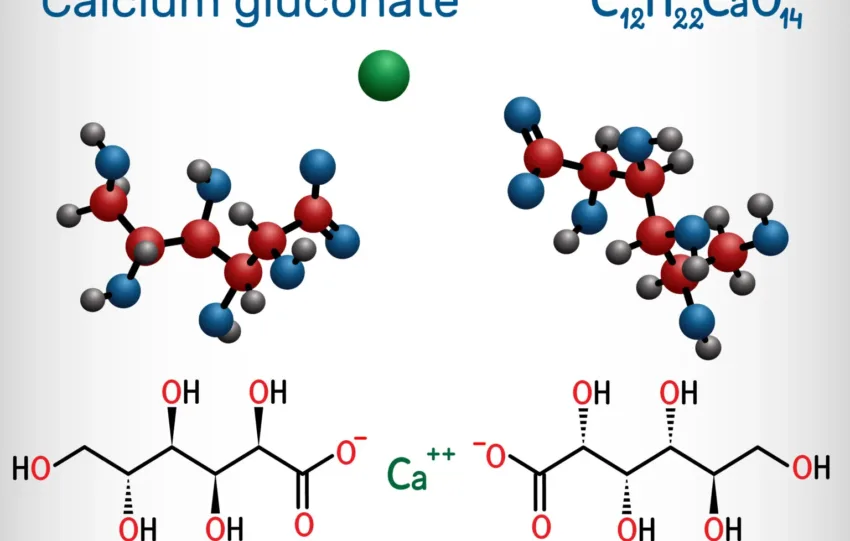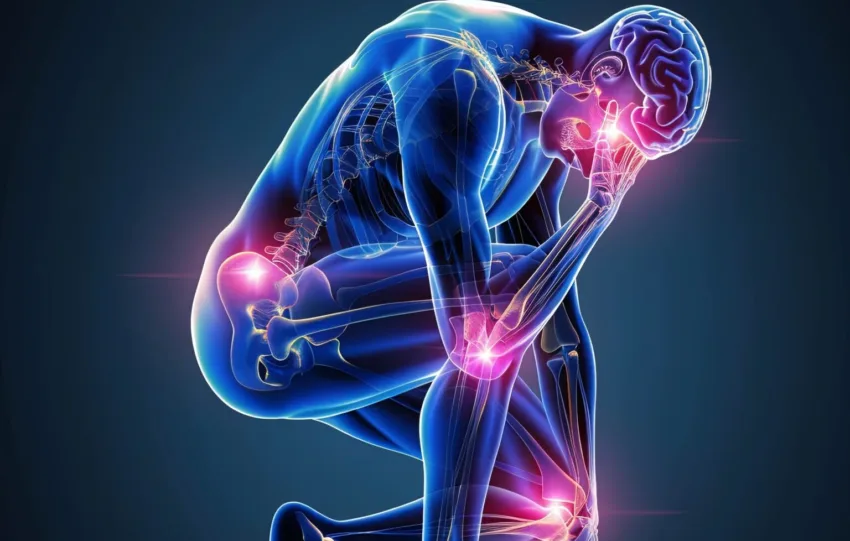
Calcium is one of the most abundant and vital minerals in the human body. Known primarily for its role in maintaining strong bones and teeth, calcium is equally crucial for other physiological functions, such as muscle contraction and nerve transmission. These processes are fundamental to daily activities, ranging from voluntary movements to critical involuntary functions like heartbeat regulation and communication between neurons. This article delves deep into the scientific mechanisms behind calcium’s involvement in muscle function and nerve signaling, discusses the health implications of calcium imbalance, and provides evidence-based recommendations for maintaining optimal calcium levels.
Calcium and Muscle Function
1. Calcium in Muscle Contraction
Muscle contraction is a highly coordinated event that depends on calcium ions (Ca²⁺). Here’s how calcium facilitates this process:- Triggering Contraction: When a nerve signal reaches a muscle fiber, calcium ions are released from the sarcoplasmic reticulum, a specialized storage site in muscle cells.
- Actin-Myosin Interaction: Calcium binds to troponin, a regulatory protein on the actin filament. This binding causes a conformational change that shifts tropomyosin, exposing binding sites for myosin on the actin filament.
- Cross-Bridge Formation: Myosin heads attach to actin, and using ATP as energy, the filaments slide past each other, resulting in muscle contraction.
2. Types of Muscle Contractions Involving Calcium
- Skeletal Muscle: Responsible for voluntary movements, such as walking and lifting. Calcium release is essential for precise control of these actions.
- Smooth Muscle: Found in blood vessels, the digestive tract, and other internal organs. Calcium regulates involuntary movements like blood flow and peristalsis.
- Cardiac Muscle: The heart relies on calcium for rhythmic contractions that pump blood effectively.
3. Calcium as a Signal Amplifier
Calcium acts as a secondary messenger in muscle cells, amplifying the initial signal generated by nerve impulses. This ensures that even small stimuli can produce significant muscle contractions.Calcium and Nerve Transmission
1. Calcium’s Role in Synaptic Transmission
Nerve transmission is the process by which signals are sent from one neuron to another or to a target cell, such as a muscle fiber. Calcium plays a pivotal role in this process:- Action Potential Arrival: When an electrical signal (action potential) reaches the end of a neuron, it causes voltage-gated calcium channels in the presynaptic membrane to open.
- Neurotransmitter Release: Calcium ions flow into the neuron, triggering the release of neurotransmitters stored in vesicles. These chemical messengers cross the synaptic gap and bind to receptors on the next neuron or muscle cell, propagating the signal.
2. Calcium in Resting Membrane Potential
Calcium helps maintain the resting membrane potential of neurons by interacting with other ions like sodium (Na⁺) and potassium (K⁺). This potential is essential for the generation of action potentials that drive nerve signaling.3. Neuromuscular Junction
At the neuromuscular junction, calcium’s role is twofold:- It facilitates the release of acetylcholine, a neurotransmitter that stimulates muscle contraction.
- It helps propagate the signal from the nerve to the muscle, ensuring smooth and coordinated movement.
Health Implications of Calcium Imbalance
1. Hypocalcemia (Low Calcium Levels)
Hypocalcemia can impair muscle function and nerve signaling, leading to:- Muscle Cramps and Spasms: Inadequate calcium disrupts muscle contraction.
- Numbness and Tingling: Poor nerve transmission causes sensory disturbances.
- Tetany: Severe cases may result in involuntary muscle contractions, particularly in the hands and feet.
2. Hypercalcemia (High Calcium Levels)
Excess calcium can cause:- Muscle Weakness: Excessive calcium inhibits proper muscle contraction.
- Nervous System Depression: High calcium levels impair nerve signal transmission, leading to fatigue, confusion, and lethargy.
- Cardiac Arrhythmias: Calcium imbalances can disrupt the heart’s rhythm.
Sources of Calcium for Optimal Muscle and Nerve Health
1. Dietary Sources
- Dairy Products: Milk, cheese, and yogurt are excellent sources of bioavailable calcium.
- Leafy Greens: Kale, broccoli, and bok choy are good plant-based options.
- Seafood: Sardines and salmon with bones are calcium-rich.
- Fortified Foods: Orange juice, plant-based milks, and cereals are often fortified with calcium.
2. Supplements
Calcium supplements, such as calcium carbonate and calcium citrate, can be used to meet daily requirements. However, supplementation should be done under medical supervision to avoid hypercalcemia.FAQs
Q: Why is calcium important for muscle function?
A: Calcium is essential for muscle contraction. It binds to regulatory proteins in muscle cells, allowing actin and myosin filaments to interact and generate movement.Q: How does calcium contribute to nerve signaling?
A: Calcium facilitates the release of neurotransmitters at synapses, allowing communication between neurons and other cells.Q: Can I get enough calcium from a plant-based diet?
A: Yes, with careful planning. Leafy greens, fortified plant milks, and seeds are excellent plant-based sources of calcium.Q: What are the symptoms of low calcium levels?
A: Symptoms include muscle cramps, spasms, numbness, tingling, and, in severe cases, tetany or cardiac arrhythmias.Q: How much calcium do I need daily?
A: The RDA for calcium varies by age and gender but generally ranges from 1,000–1,200 mg/day for adults.Bibliography
- Berridge, M. J., Bootman, M. D., & Roderick, H. L. (2003). “Calcium signalling: dynamics, homeostasis and remodelling.” Nature Reviews Molecular Cell Biology, 4(7), 517–529.
- Clapham, D. E. (2007). “Calcium signaling.” Cell, 131(6), 1047–1058.
- Brini, M., & Carafoli, E. (2000). “Calcium signaling: a historical account, recent developments, and future perspectives.” Cellular and Molecular Life Sciences, 57(3), 354–370.
- Shan, D. E., & Liaw, M. Y. (2008). “Calcium in muscle contraction.” Journal of Biomedical Science, 15(6), 751–762.
- Ross, A. C., et al. (2011). Dietary Reference Intakes for Calcium and Vitamin D. The National Academies Press.










